Adorable faces, wrinkly skin, and funny internet videos. These are just a few things that the Pug and Bulldog are known for. You don’t have to scroll through the internet long to run into a bulldog riding a skateboard, or a pug wearing a hilarious costume. It’s no wondering these two adorable dog breeds are skyrocketing in popularity. So, what’s the difference between the pug and bulldog? We’re comparing the Pug vs Bulldog to help you pick the perfect wrinkly-faced pooch for you and your family.
Pug Overview
Known for its curly Q tail and smashed in, wrinkly face, Pugs are irresistible. They originated in China centuries ago. The Chinese allegedly tried to create face wrinkles that would spell out the Chinese characters for “prince”. The result, adorable face wrinkles that have captured our hearts and our social media news feeds.
Typical Pug colors include black, fawn, silver fawn, and apricot fawn. Their eyes are huge relative to their bodies, adding to their list of comical features. If you haven’t seen one in person, Pugs are tiny. Typical Pug height is 10-14 inches tall at the shoulder, and typical weight is 14 – 18 pounds.
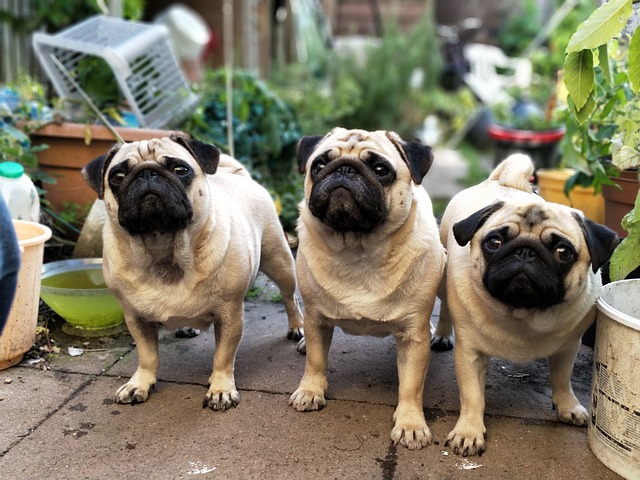
Intelligence
Pugs are sometimes pegged as an unintelligent breed. In reality, Pugs are just smart enough to take advantage of poor training and loose boundaries. These dogs can respond well to positive training, but may be a challenge for a first time dog owner. Establish rules and boundaries early for best results with your Pug in the obedience department.
READ: 10 Dog Training Mistakes You’re Probably Making
Temperament
Pugs are often considered the class clown of dog breeds. They love attention, and love to show off. Their charm and people-pleasing attitude is irresistible. Pugs were originally bred as lap dogs, so they love human companionship. They are very adaptable. Most will go along with whatever lifestyle their owner enjoys. If you prefer to sit at home and watch Netflix, your Pug will love snuggling up to you and relaxing. If you prefer an active lifestyle, most Pugs will join right in with you. Anti-barking training may be necessary, as Pugs are somewhat prone to unnecessary barking.
Learn about the BarkBlaster, the humane bark control sprinkler.
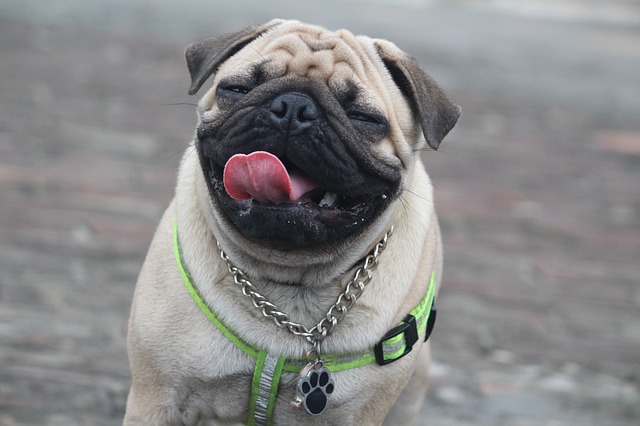
Maintenance
Like other short-nosed breeds, Pugs are brachycephalic, meaning they have elongated palates. This anatomical layout can be problematic. Breathing problems can occur, especially in warmer temperatures. Avoid extended periods of time in hot weather with your Pug. Sometimes surgery is required to help open up a Pug’s nasal passages.
Proptosis can also occur in this breed. This is when the dog’s eyeballs literally pop out of their sockets. This can be quite frightening, but immediate action is required. To help avoid proptosis in Pugs, avoid any tightening around the neck, like strapping on a collar too tight or a using a choke chain.
Shedding is minimal, but expect to do some grooming. Regular cleaning of the face is a must. All those cute wrinkles can harbor bacteria and infection if not cleaned well.
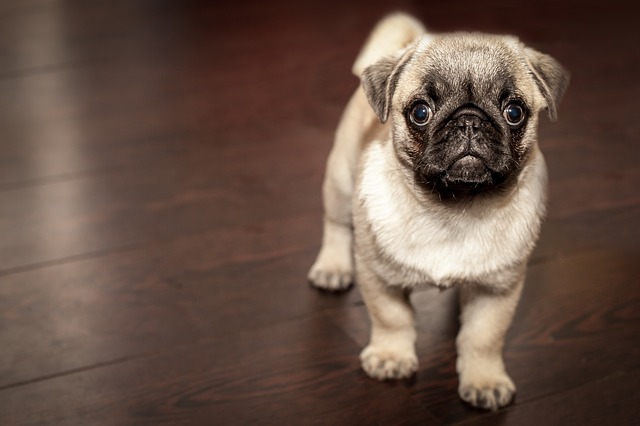
Bulldog Overview
Most often, when people are say the term “bulldog”, they are referring to an English Bulldog. We’re going to focus on specifically English Bulldogs. From Mack Trucks to the Georgia mascot, Bulldogs are beloved by many.
Cocky and determined, English Bulldogs have a personality that’s also hard to resist. This breed is completely man-made. With it’s big head, powerful shoulders, and tight rear, there’s nothing like this in nature. Bulldogs are always making funny sounds. Beware, they burp, fart, and snort with the best of them. They are a dog that is thoroughly entertaining to just sit and watch.
While cute and cuddly today, early Bulldog history traces to 13th century England. They were bred to take out bulls. These 80 pound dogs could literally take out a bull that weighed nearly a ton. Since then, English Bulldogs have been bred toward companionship rather than fighting ability. Today, the average English Bulldog weighs between 40 and 55 pounds, and measures in between 12-16 inches.

Intelligence
English Bulldogs can be stubborn. This stubborn attitude is often mistaken for lack of intelligence, but this typically isn’t the case. Training can be a challenge. Most Bulldogs won’t respond well to a strong hand. Food and positive reinforcement are the best training tools.
Temperament
Bulldogs are typically easy-going and lean to please. As puppies, English Bulldogs are very energetic, but they typically mellow out with age. Adults will typically prefer a lazy day with belly rubs, rather than a long run at the park. They form strong bonds with their human families, and do extremely well with kids. Most Bulldogs are protective and loyal. Early socialization is important, as they can be dog-aggressive. Bulldogs aren’t known for excessive barking, and anti-bark training may not be needed.
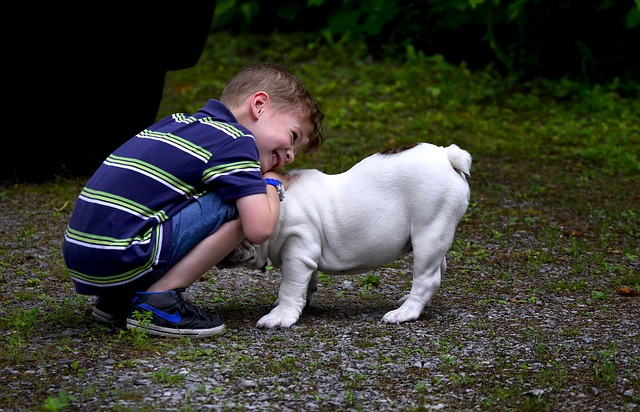
Maintenance
English Bulldogs don’t need constant rigorous exercise. In fact, excessive exercise in warm weather can be dangerous due to their short-nosed anatomy. However, without exercise and diet control, these dogs can easily succumb to obesity.
Unfortunately, these dogs are quite prone to variety hereditary disorders. Their life spans are relatively low, 8-10 years. Common health issues in English Bulldogs include respiratory problems, heart diseases, skin disorders, and arthritis.
Infection can occur around the face if all those wrinkles and folds aren’t well cleaned. Occasional grooming of a Bulldog’s coat is fine, as they only shed minimally.
Be advised, they are often unable to give birth naturally, due to their size and shape.

Pug vs Bulldog Conclusion
When comparing the Pug vs Bulldog, price should be one of your first considerations. While Pugs can cost around $250 – $1500, English Bulldogs will typically cost around $1000 to $3500.
If money is no issue comparing the Pug vs English Bulldog, here are a few more major differences between the two breeds. Pugs tend to be more active and alert, relishing opportunities for play. Bulldogs do play, but they are typically content taking it easy. Pugs are smaller than English Bulldogs, but both are okay living in small spaces. Pugs are more prone to excessive barking than Bulldogs.
Which breed would you rather own? Let us know in the comments below!

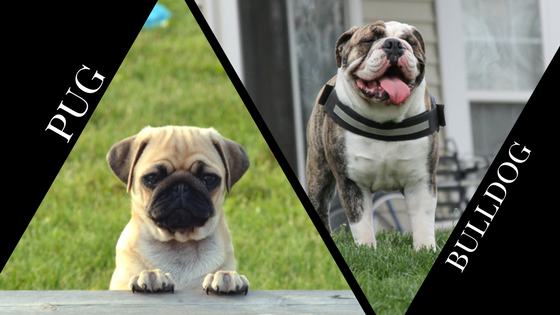
One thought to “Pug vs Bulldog – Which Dog is Best for You?”
In 3 the yount family of three pug l
Comments are closed.